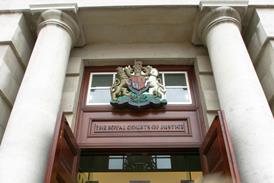The Law Society published an important briefing paper last week on the SRA’s proposed changes to the information solicitors’ firms will have to publish on their websites as from December 2018. The aim of the briefing paper is to help firms prepare for the changes.

In short, firms will have to publish price and service information on their websites in the following areas of law:
- for individual customers, on residential conveyancing, probate, immigration (except asylum), road traffic offences, and employment tribunal claims (unfair or wrongful dismissal)
- for business customers, on employment tribunal claims (unfair or wrongful dismissal), debt recovery (up to £100,000), and licensing applications for business premises.
Firms will also have to publish details of:
- the experience and qualifications of those carrying out the work, and of their supervisors;
- what services are included in the price, including the key stages and likely timescales;
- services that might reasonably be included in the price displayed, but are not.
There are detailed descriptions of the definition of the price information, which covers disbursements, VAT, the basis of the charge, and the possibility of conditional fee or damages-based agreements. The SRA is clear, however, that its aim is not to oblige firms to adopt a specific pricing model, and the rules do not stipulate a pricing or charging model that should be used.
Regarding complaints, firms will have to publish regulatory- and complaint-related information on their websites.
If a firm does not have a website, it is not free of these obligations, but will have to make all the above information available on request.
The details can be found in the new draft rules (awaiting LSB approval) that the SRA published simultaneously with their announcement.
Before anyone responds angrily that the Law Society should be opposing the changes every inch of the way, the briefing paper is at pains to point out that the Law Society has a history of reasoned opposition to the measures. It recites the steps taken by the Society to date, giving detailed grounds for its position, including research it commissioned on how clients approach the selection of a solicitor.
But this was one of those topics where it didn’t matter what the Law Society said. In an age when nearly everything can be researched and compared before clicking on a purchase, and in an age when the professions are the blob standing in the way of making everything even more clickable, the outcome was predetermined.
And so the SRA persisted, with the support of consumer groups, the Legal Services Consumer Panel and the LSB. The Competition and Markets Authority, in its report on the legal services market at the end of 2016, had previously recommended that frontline regulators take action to improve transparency by providers, through more information on price, service and quality of legal services.
The Law Society’s briefing paper acknowledges that compliance with the changes will cause significant outlay of resources to some firms at a time when they are already facing grim financial conditions and increased competition. The SRA will review the measures regularly, beginning with a year after their launch, and so the Law Society is keen to hear from the profession as to how implementation actually affects them.
We should be in no doubt that the future for which these new rules are laying the ground is one where more clients will find solicitors through price comparison websites, which will probably become a frequent and principal tool. In among the announcements is one that the SRA will now develop a digital register containing all the information on solicitors and firms that it will hold, to be launched next year. Among the specific beneficiaries listed for that register are data re-publishers, such as price comparison websites. The future is approaching fast.
One success by the Law Society has been to change the SRA’s mind about the publication of complaints. The SRA had initially proposed publishing data on the number of first-tier complaints received and resolved by firms, allegedly to help consumers assess the quality of law firms. It now recognises that this information could change how firms viewed complaints, and that the data would require significant work to contextualise it for consumers before publication. That is a welcome change of mind.
Finally, the SRA is very keen on a digital badge, which will have to be compulsorily displayed on firms’ websites. It will take a user to a new SRA webpage listing client protections, such as the level of PII cover and eligibility to submit a claim to the Compensation Fund.
The Law Society is developing resources to assist members to adapt to the changes, which will be announced over the coming months. These resources are best produced in conjunction with the profession, and so solicitors are urged to send feedback.





























No comments yet